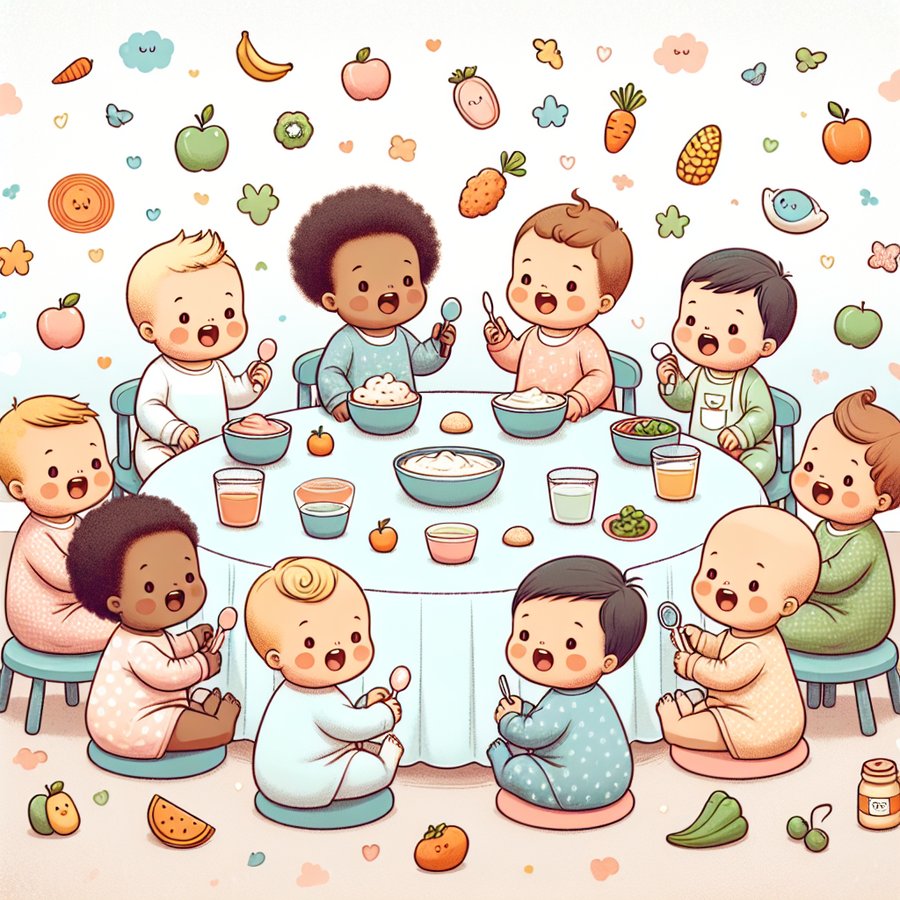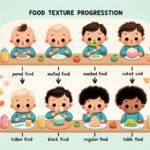Introducing texture in baby meals: A progressive approach is crucial for the development of your little one’s eating skills and for preparing them to handle a variety of foods as they grow. This strategy not only aids in the development of their oral and motor skills but also encourages a healthy relationship with food from a young age. Let’s dive deep into the benefits and methods of introducing textures in your baby’s meals effectively.
The Importance of Texture in Baby Meals
Introducing texture in baby meals isn’t just about the transition from liquid to solid foods; it’s about nurturing a sensory relationship with food. Varied textures play a pivotal role in developing a baby’s oral-motor skills, which are essential for chewing, swallowing, and speech development. A progressive approach to texture introduction ensures that babies gradually adapt to new experiences without becoming overwhelmed.
Research suggests that early exposure to a variety of textures can decrease the likelihood of food aversions and picky eating habits later in life. By incorporating different textures into meals, parents can help their babies become more adaptable and open to trying new foods, establishing a foundation for healthy eating patterns. (Source)
Introducing Texture in Baby Meals: A Progressive Approach
Introducing texture in baby meals: A progressive approach involves starting with smooth purees and gradually moving towards thicker, chunkier textures before finally introducing soft, solid pieces of food. This method helps to ensure that the transition is smooth and manageable for your baby, preventing any negative experiences that might lead to food rejections.
To begin, parents can introduce single-grain cereals mixed with breast milk, formula, or water to create a thin, easily swallowable consistency. As the baby becomes more comfortable, you can progressively thicken the consistency of these meals and start incorporating mashed fruits and vegetables. Remember, it’s essential to monitor your baby’s reactions and adjust the texture based on their readiness and developmental cues. Further reading on when and how to introduce texture.
Practical Tips for Incorporating Textures into Baby Meals
When introducing texture in baby meals, a little creativity goes a long way. Start with foods that naturally have a soft texture, like bananas, avocados, or cooked sweet potatoes. These can be easily mashed or pureed to the desired consistency. As your baby progresses, you can introduce more variety by adding grains, soft-cooked vegetables, and even tender meats into their diet.
Experimenting with various cooking methods, such as steaming, boiling, or baking, can also help create different textures and flavors, making meals more interesting for your baby. It’s crucial, however, to avoid adding salt, sugar, or strong spices to baby meals, as these can be harmful to their developing system. For more tips on preparing baby meals, check out these meal prep and storage hacks.
Remember, each baby is unique, and there’s no one-size-fits-all approach. Paying attention to your baby’s signals and being patient throughout the process is key. Introducing texture in baby meals: A progressive approach not only supports your baby’s growth and development but also fosters a love for food and eating that will benefit them for years to come.
For more in-depth guidance on baby nutrition and feeding strategies, consider exploring resources like nutritional needs for premature babies and breastfeeding tips for mothers with low milk supply. Understanding these aspects can greatly enhance your approach to introducing textures in your baby’s meals.













